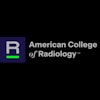
In its 2014 manual of CPT codes, the American Medical Association (AMA) added the four new codes below, which describe procedures for percutaneous, image-guided fluid collection:
- 10030: Image-guided fluid collection drainage by catheter (e.g., abscess, hematoma, seroma, lymphocele, cyst); soft tissue (e.g., extremity, abdominal wall, neck), percutaneous
- 49405: Image-guided fluid collection drainage by catheter (e.g., abscess, hematoma, seroma, lymphocele, cyst); visceral (e.g., kidney, liver, spleen, lung/mediastinum), percutaneous
- 49406: Image-guided fluid collection drainage by catheter (e.g., abscess, hematoma, seroma, lymphocele, cyst); peritoneal or retroperitoneal, percutaneous
- 49407: Image-guided fluid collection drainage by catheter (e.g., abscess, hematoma, seroma, lymphocele, cyst); peritoneal or retroperitoneal, transvaginal or transrectal
However, AMA did not add any parenthetical instructions stating that in order to submit one of these codes, the drainage catheter must remain in place at the termination of the drainage procedure. In addition, no information relative to this "indwelling placement" is found in either AMA's CPT Assistant or the AMA/American College of Radiology (ACR) Clinical Examples in Radiology.
 Jeff Majchrzak of Panacea Healthcare Solutions.
Jeff Majchrzak of Panacea Healthcare Solutions.A review of AMA's CPT Changes 2014: An Insider's View found that it did include clinical examples stating that an indwelling tube was left in place.
Because of the inconsistencies in the above publications, Panacea sent a question to and received an answer from AMA stating how this series of codes may be assigned and the type of documentation that must be present to support their assignment.
AMA does not permit Panacea to reprint its answer to written questions (due to copyright protection). However, in a personal communication, the following direction was shared: To assign any of the above codes, the patient undergoing the imaged-guided percutaneous fluid collection must leave the area (i.e., angiography lab) where the procedure was performed with an indwelling catheter left in place. If the catheter is placed and then removed, none of the above codes may be used.
Depending upon the anatomic site treated, however, there may indeed be a listed code to define the procedure performed. If so, that code should be utilized.
Following CPT guidance in the "Instructions for Use" section of the manual, if no specific code is provided, an unlisted procedure code (UPC) should be used. Verbatim:
Select the name of the procedure or service that accurately identifies the service performed. Do not select a CPT code that merely approximates the service provided. If no such specific code exists, then report the service using the appropriate unlisted procedure or service code. In surgery, it may be an operation; in medicine, a diagnostic or therapeutic procedure; in radiology, a radiograph. Other additional procedures performed or pertinent special services are also listed. When necessary, any modifying or extenuating circumstances are added. Any service or procedure should be adequately documented in the medical record.
As stated previously, neither the CPT manual, the CPT Assistant, nor Clinical Examples in Radiology states that the catheter must be left in place. CPT Changes does state this, but if one were not in possession of this document, it would not be known that this reference exists.
Based upon this most recent communication with AMA, Panacea coding experts believe the following coding guidelines should be followed:
- If a percutaneous, image-guided fluid collection procedure of a soft-tissue, visceral, peritoneal, or retroperitoneal area is performed and the drainage catheter is left in place at the termination of the procedure, a code such as 10030, 49405, or 49406 should be used.
- If a percutaneous, image-guided fluid collection procedure of the peritoneal or retroperitoneal area via a transvaginal or transrectal approach is performed and a drainage catheter is left in place at the termination of the procedure, code 49407 should be used.
- If CPT provides a code to report a percutaneous, image-guided fluid collection procedure for anatomic areas not defined by codes 10030 or 49405-49407 (e.g., 32554-32557) and percutaneous image-guided drainage is performed, one must use the listed code for the area and method of drainage provided.
- If a percutaneous, image-guided fluid collection procedure of an anatomic area not defined by one of the codes above is performed and the drainage catheter is not left in place at the termination of the procedure, an unlisted procedure code should be used.
- When a drainage is performed of a lesion of the "skin, subcutaneous, or accessory structures" (defined by CPT series 10030-11646) and if a needle is used to perform a puncture aspiration of a soft-tissue lesion, code 10160 (puncture aspiration of abscess, hematoma, bulla, or cyst) should be assigned. This code does not include image guidance, so if ultrasound, CT, or MR guidance is used and documentation criteria are met, consider one of the following options as well:
- 76942: Ultrasonic guidance for needle placement (e.g., biopsy, aspiration, injection, localization device), imaging supervision and interpretation
- 77012: CT guidance for needle placement (e.g., biopsy, aspiration, injection, localization device), radiological supervision and interpretation
- 77021: MR guidance for needle placement (e.g., biopsy, aspiration, injection, localization device), radiological supervision and interpretation
It is our wish that this information provides guidance and assistance to you all. Hopefully in the near future AMA will publish additional information to help in coding these procedures.
Jeff Majchrzak is vice president of clinical consulting services, radiology, for Panacea Healthcare Solutions. In his role as consultant, he conducts CPT coding assessments for both hospitals and physicians, evaluates administrative policies and procedures, and helps develop quality assurance programs to ensure complete and compliant coding and billing. Jeff trains both radiology and cardiology staff (on both technical and professional billing issues) in correct coding practices. Jeff contributes to numerous publications by MedLearn Publishing (a division of Panacea) and is a sought-after national speaker on coding and reimbursement for radiology, interventional radiology, nuclear medicine, and cardiology. Jeff can be reached at [email protected], or visit Panacea Healthcare Solutions at www.panaceahealthsolutions.com.



















